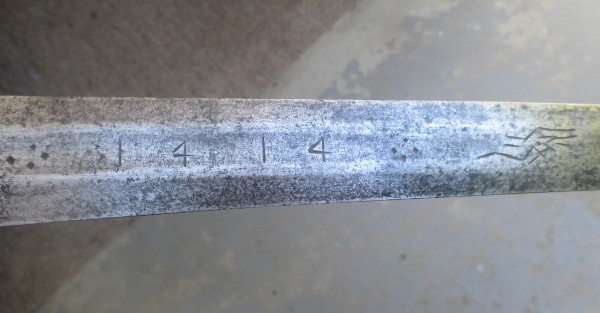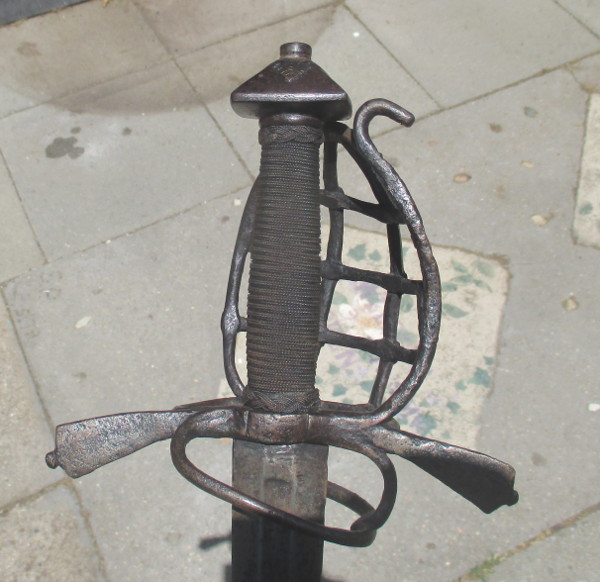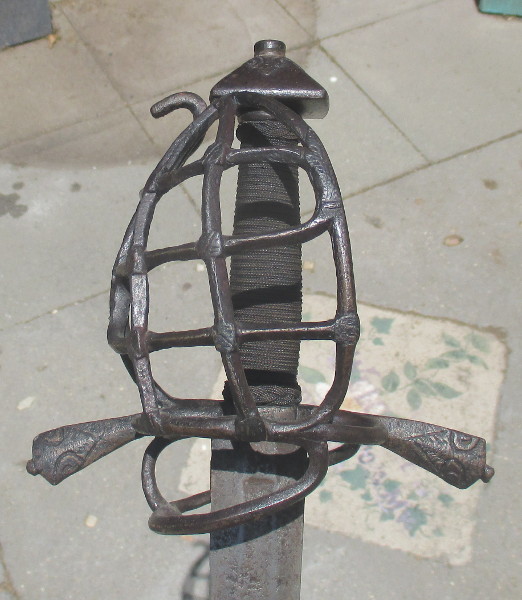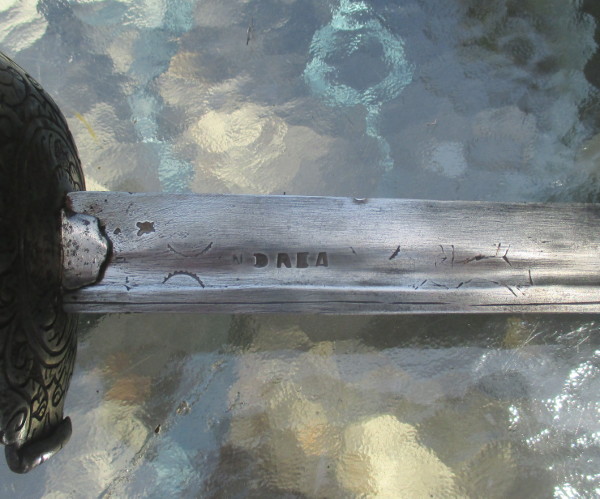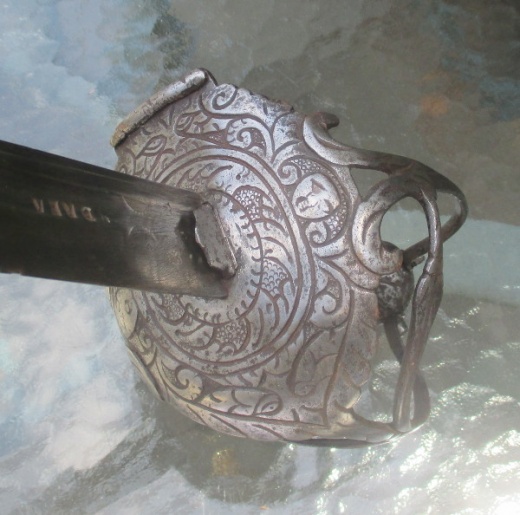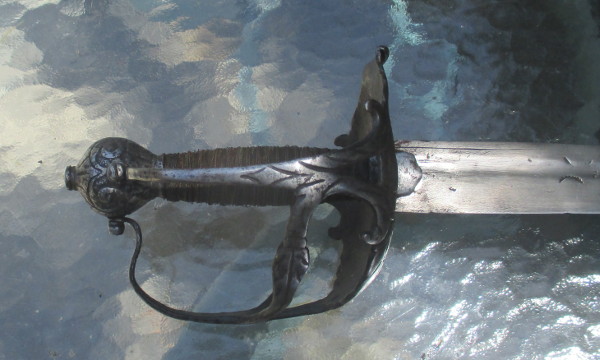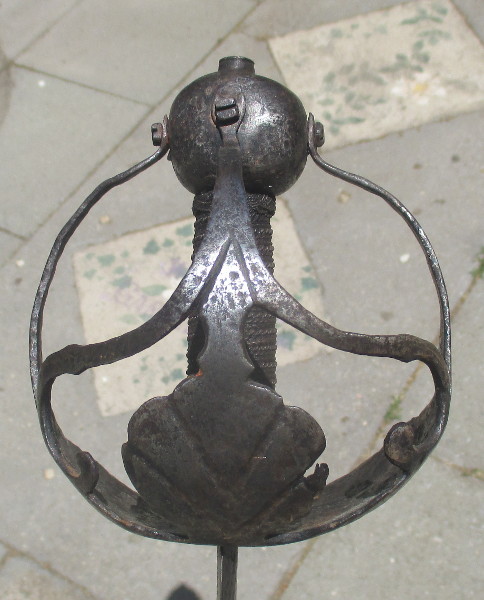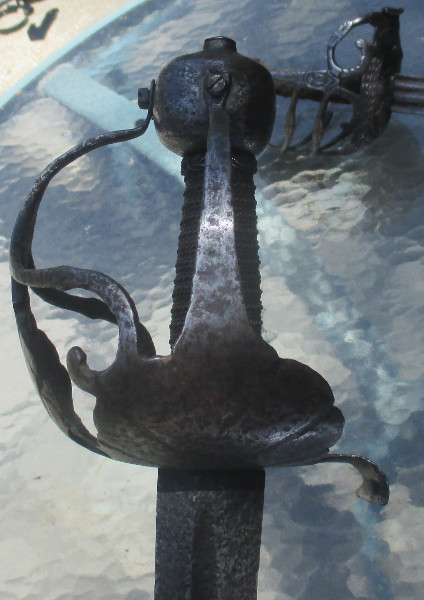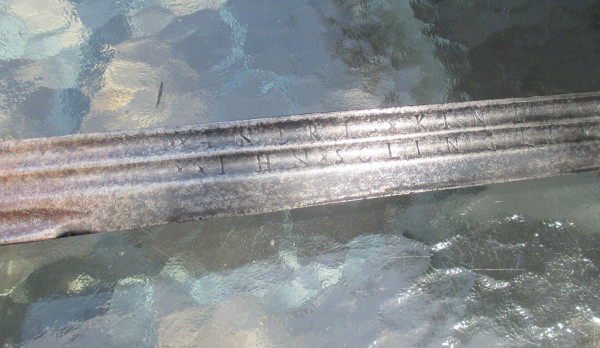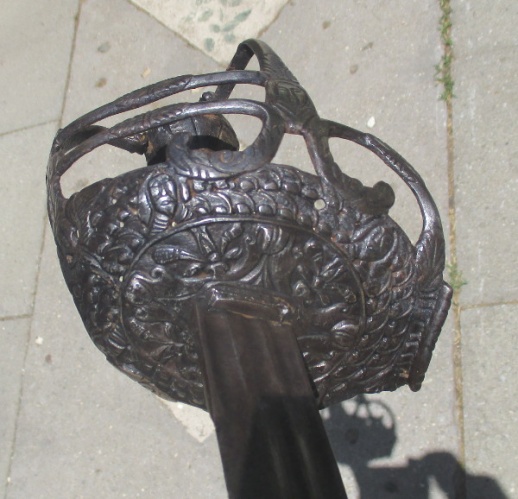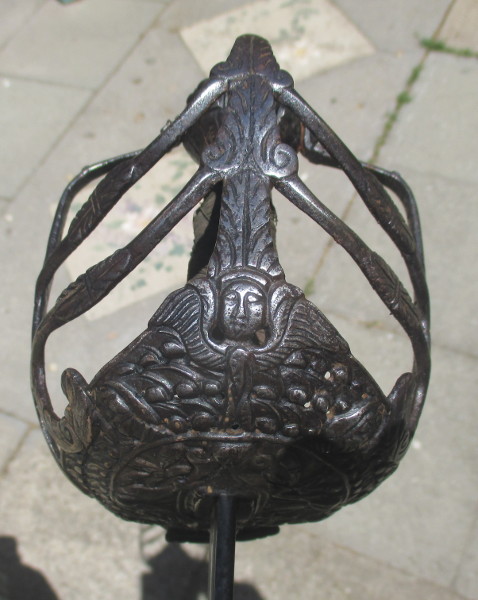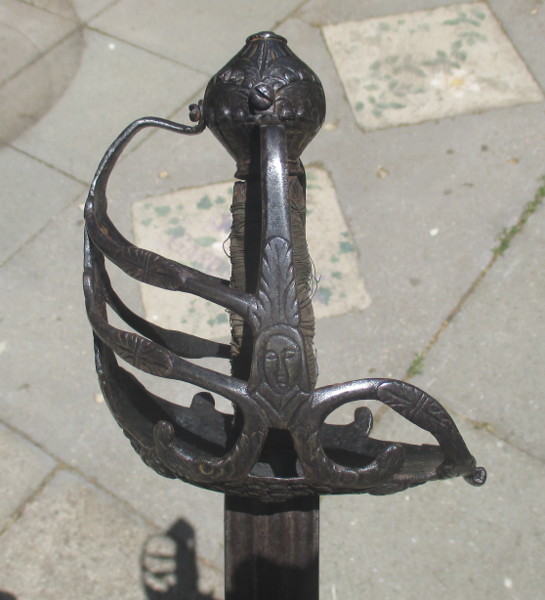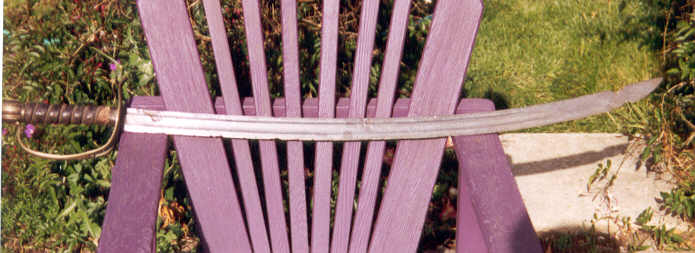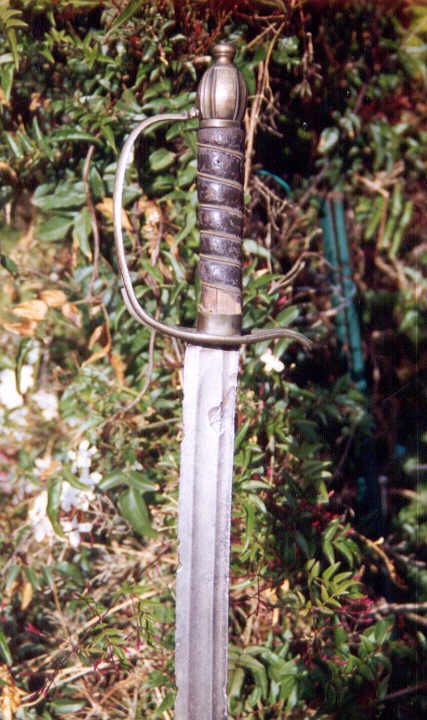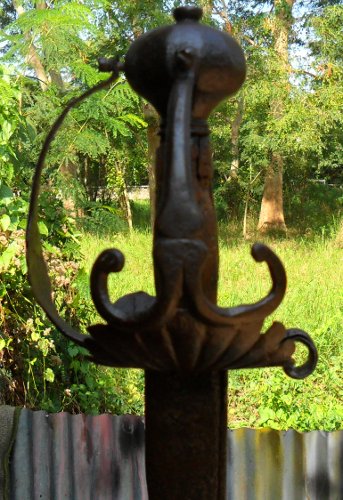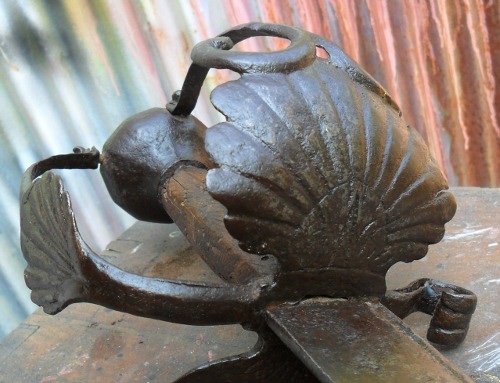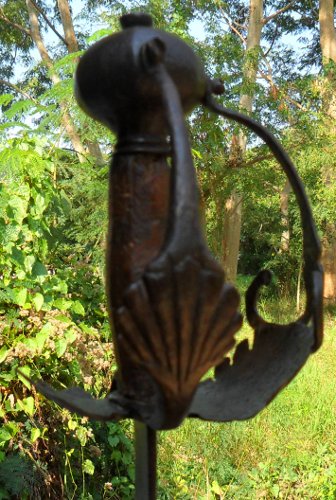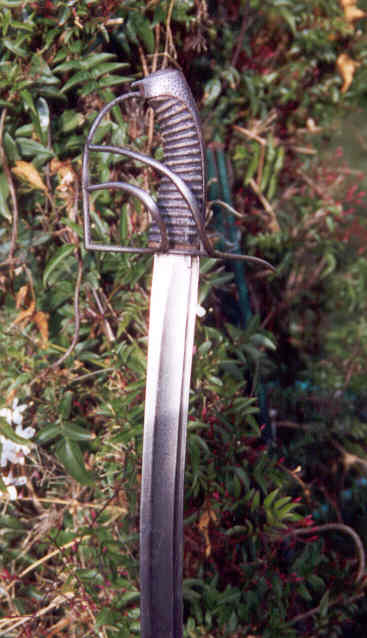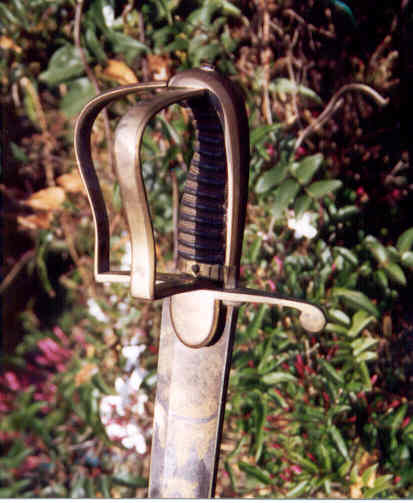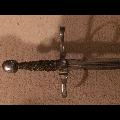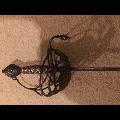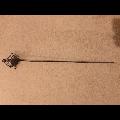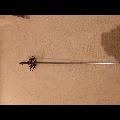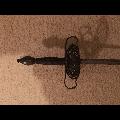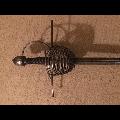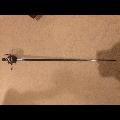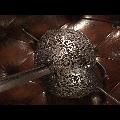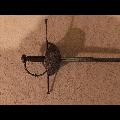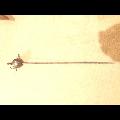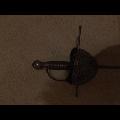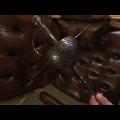38" se blade with wide and narrow fullers that begin about 6" below the hilt.
Basket is built upon a heart shaped base, with two scrolled side branches on the left and three on the right.
This sword was an eBay purchase of about 5 years ago. It is very rusted, but except for down near the point, is not deeply pitted. The hilt has a golden tone because someone has painted it with gold paint in the past. The grip is a two-piece replacement that I made, as this sword had no grip when purchased. The reason that I made a two piece sandwich grip is that this sword has never been disassembled, and why take something apart when you don't need to? The hilt and blade are tight, and it retains parts of the original leather washer between the hilt and blade shoulder. In the future I will remove the red crusty blade rust, give it a thorough cleaning and see what we've got under all the rust and paint.
Mazansky shows hilts like this, and the Tower has this hilt type, but with a longer grip and curved blades.


